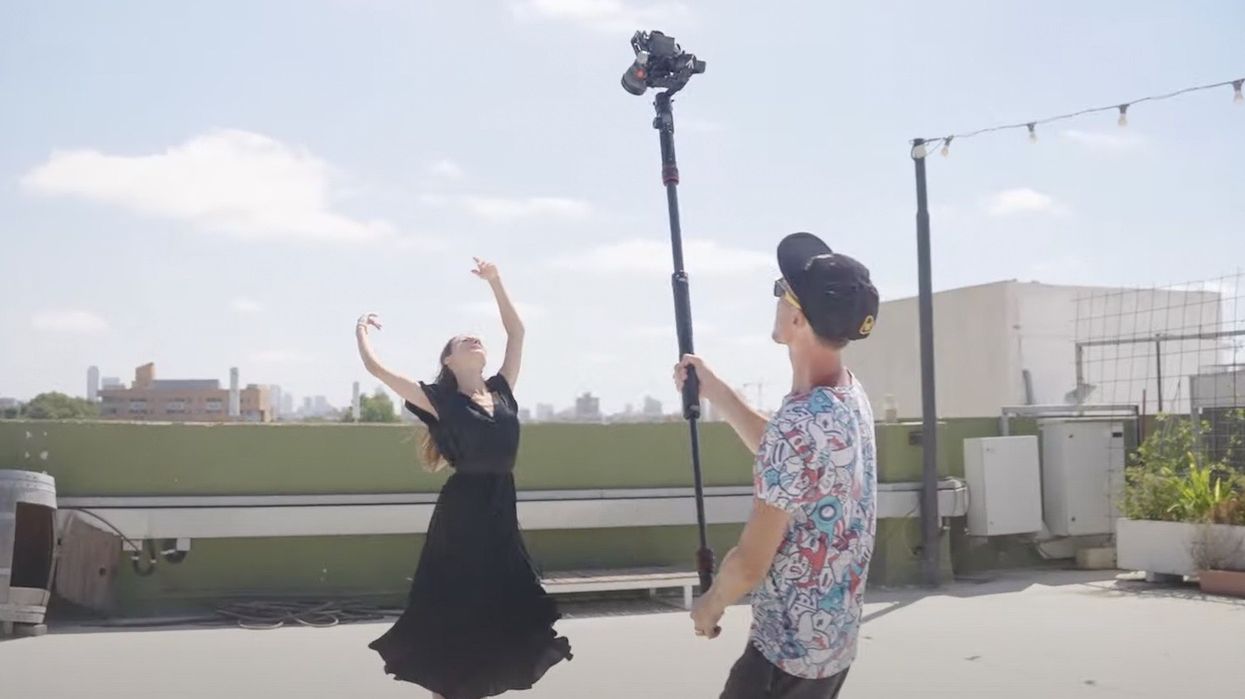Up Your Gimbal Game with These 12 Tricks
It is always great to have a few more tricks up your sleeve when it comes to using the hottest gear in filmmaking today.

Gimbals are one of the best pieces of gear on the market right now, and there is a good reason why. Gimbals allow you to get great shots that used to only be feasible with some expensive equipment and a staff to operate it. For under a thousand dollars, you can purchase any professional-grade gimbal that stabilizes any pro camera.
Since it doesn’t look like gimbals are going anywhere soon, there is no time like the present to learn how to work with one. If you already have a gimbal and want to learn how to use it in a few different ways, then we got a few tips to help you out.
DIYPhotography breaks down 12 different gimbal tricks that every filmmaker should know before stepping onto a set. Check out his video below.
Here is the gear we will be using for the 12 different tricks:
- A Manfrotto 460 gimbal
- A dedicated remote control
- A monopod
Using a gimbal with an extending arm and remote control provides plenty of creative options without taking up too much of your time. You don’t have to have these exact tools, because other variations are very similar and will work in the same way.
Now that you have all of the gear needed, let’s get into the tricks.
Use a long lens. Stay away from using wide-angle lenses if you are wanting a more cinematic look. Try using a long lens to get the separation between your subject and the background. While long lenses are heavier and hard to master, the depth that is created in the shot is unlike any other lens out there.
Set the gimbal’s sensitivity low. It is tempting to turn the sensitivity too high because of the faster response time, but you get a lot of shakiness in the frame. Setting the sensitivity lower means that the gimbal will react less to your movement. Your small mistakes will be eliminated if the sensitivity is lower.
Walk backward. Camera operators have been walking backward with the camera forever, and they do this for a reason. Walking backward means that you can keep your eyes on the subject, and keep the subject centered in the frame without you having to walk awkwardly. Make sure to keep your knees bent when walking backward to eliminate any unwanted bounce.
Keep the gimbal close to your body. Gimbals are pretty lightweight, but the gimbals do get heavy when you add a camera and a lens. If you don’t feel like pumping iron every day to be able to hold up your setup for a few minutes, then try keeping the gimbal close to your body. Having your elbows bent allows you to have movement without feeling strained by the weight of the setup.
Recreating a crane. Who doesn’t love a crane shot? With a gimbal and a monopod, you can create a great-looking crane shot. You can even do a sweeping motion that starts very low and ends very high, or vice versa.
Recreating drone shots. Place your gimbal setup like a tripod, then, using the remote control, move the camera as needed for the shot. It will create a drone-like shot without having to use a drone.
Low angled shots. Low angled shots can add another layer to your story through the unique point of view, but it’s hard to get that low without hurting your back. With a gimbal, you can get low angled shots with ease by extending the stick. You will have better stability and peripheral vision while having the gimbal extended like this. Your back will thank you at the end of the day.
Lock your camera in place. Whenever you need to screw your gimbal into a monopod, set the gimbal to "L" to stop it from turning. It will make screwing the gimbal into another tool so much easier. When you’re done, you can return the gimbal to your mode of choice.
Try and use as many axes as you can. Once you’re comfortable with your gimbal, try to use different levels of parallax on every axis. You can do this by tilting, tracking, and panning all in one take. It creates a dynamic shot that brings the shot to life.
Walk slower than the subject. Resist the urge to get close by moving quickly. Moving slower than the subject means you will have more time to frame up the shot, and gives you time to predict your framing even more. Act as an observer, and keep your distance.
Guide your gimbal with your body. Instead of twisting and turning the gimbal to get the shot, turn your body and guide the gimbal. This will give you smoother movements that don’t feel robotic.
Create a lateral shot. By connecting your gimbal to the monopod, you can create a top-down shot that reveals the story point. Hold the monopod by your torso, and use a pull to create a great lateral shot.
Don’t spray and pray. Having a plan is going to make filming easier no matter what it is you are trying to capture. Plan the start and end of the frames, then move freely in between them. Make sure you have a strong starting position and ending position.
Do you have any other gimbal tricks that have helped you out? Let us know what they are in the comments below!
Source: DIYPhotography











